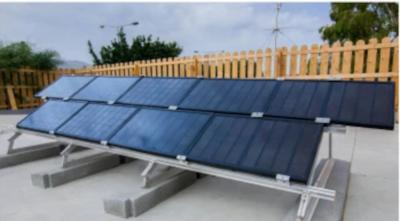What is a solar panel?
Solar panel electricity systems, also known as solar photovoltaics (PV), capture the sunâs energy (photons) and convert it into electricity. PV cells are made from layers of semiconducting material, and produce an electric field across the layers when exposed to sunlight. When light reaches the cell, some of it is absorbed into the semiconducting material and causes electrons to break loose and flow. This flow of electrons is an electric current, that can be drawn out and used for powering outside devices. This current, along with the cellâs voltage (a result of built-in electric fields), define the power that the solar cell is capable of producing. It is worth mentioning that a PV cell can produce electricity without direct sunlight, but more sunshine equals more electricity.
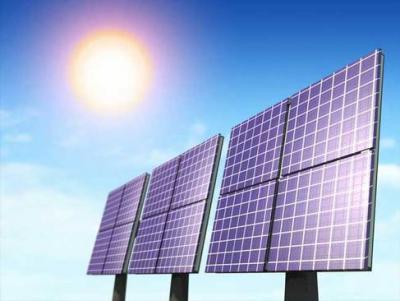
A module, or panel, is a group of cells connected electrically and packaged together. several panels can also form an array, which can provide more electricity and be used for powering larger instruments and devices.
Different kinds of Solar cells
Solar cells are roughly divided into three categories: Monocrystalline, Polycrystalline and Thin Film. Most of the worldâs PVs are based on a variation of silicon. The purity of the silicon, or the more perfectly aligned silicon molecules are, affects how good it will be at converting solar energy. Monocrystalline solar cells (Mono-Si, or single-crystal-Si) go through a process of cutting cylindrical ingots to make silicon wafers, which gives the panels their characteristic look. They have external even coloring that suggests high-purity silicon, thus having the highest efficiency rates (typically 15-20%). They are also space efficient (their efficiency allows them to be small) and live longer than other kinds of solar panels. Alas, they are more expensive than other kinds and tend to be damaged by external dirt or snow.
Polycrystalline silicon (p-Si or mc-Si) solar cells do not go through the abovementioned process, and so are simpler and cost less than Monocrystalline ones. Their typical efficiency is 13-16%, due to lower silicon purity. They are also bigger and take up more space.
Thin-Film solar cells (TFSC), are made by depositing one or several thin layers of photovoltaic material onto a substrate. Different types of TFSCs are categorized by which photovoltaic material is deposited onto the substrate: Amorphous silicon (a-Si), cadmium telluride (CdTe), copper indium gallium selenide (CIS/CIGS), polymer solar panels and organic photovoltaic cells (OPC). Thin-film modules have reached efficiencies of 7-13%. Their mass production is simple, they can be made flexible and are potentially cheaper to manufacture than crystalline-based solar cells. They do, however, take up a lot of space (hampering their use in residential applications) and tend to degrade faster than crystalline solar panels.
Solar power advantages and disadvantages
Solar power is free and infinite, and solar energy use indeed has major advantages. It is an eco-friendly, sustainable way of energy production. Solar energy systems today are also much cheaper than they were 20 years ago, and save money in electricity expenses. In addition, it is a much environmentally cleaner form of energy production that helps reduce global warming and coal pollution. It does not waste water like coal and nuclear power plants and is also considered to be a form of energy that is much safer for use.
Although solar power production is widely considered to be a positive thing, some downsides require mentioning. The initial cost of purchasing and installing solar panels can be substantial, despite widespread government subsidy programs and tax initiatives. Sun exposure is critical and so location plays a significant role in the generation of electricity. Areas that are cloudy or foggy for long periods of time will produce much less electricity. Other commonly argues disadvantages regard insufficiency of produced electricity and reliability issues.
Solar power applications
Common solar energy applications include various residential uses such as solar lighting, heating and ventilation systems. Many small appliances utilize solar energy for operation, like calculators, scales, toys and more. Agriculture and horticulture also employ solar energy for the operation of different aids like water pumps and crop drying machines. The field of transportation has been interested in solar powered vehicles for many years, including cars, planes and boats that are vigorously researched and developed. Solar energy also has various industrial applications, ranging from powering remote locations as well as space and satellite systems, to powering transportation signals, lighthouses, offshore navigation systems and many more.
Solar technologies are vigorously researched, aiming to lower costs and improve existing products as well as integrate PV systems in innovative products like PV-powered curtains, clothes and laptop cases.
Graphene and solar panels
Graphene is made of a single layer of carbon atoms that are bonded together in a repeating pattern of hexagons. It is a 2 dimensional material with amazing characteristics, which grant it the title âwonder materialâ. It is extremely strong and almost entirely transparent and also astonishingly conductive and flexible. Graphene is made of carbon, which is abundant, and can be a relatively inexpensive material. Graphene has a seemingly endless potential for improving existing products as well as inspiring new ones.
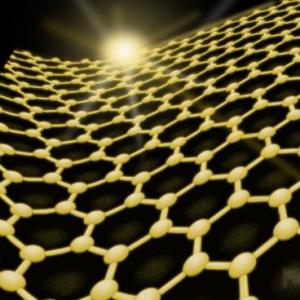
Solar cells require materials that are conductive and allow light to get through, thus benefiting from graphene's superb conductivity and transparency. Graphene is indeed a great conductor, but it is not very good at collecting the electrical current produced inside the solar cell. Hence, researchers are looking for appropriate ways to modify graphene for this purpose. Graphene Oxide (GO), for example, is less conductive but more transparent and a better charge collector which can be useful for solar panels.
The conductive Indium Tin Oxide (ITO) is used with a non-conductive glass layer as the transparent electrodes in most organic solar panels to achieve these goals, but ITO is rare, brittle and makes solar panels expensive. Many researches focus on graphene as a replacement for ITO in transparent electrodes of OPVs. Others search for ways of utilizing graphene in improving overall performance of photovoltaic devices, mainly OPVs, as well as in electrodes, active layers, interfacial layers and electron acceptors.
Commercialization efforts
While graphene-based solar cells are not currently commercially available, some efforts are bearing fruit in regards to the use of graphene in auxiliary aspects of PV. One such example is ZNShine Solar's G12 evolution era series - comprised of a 12-busbar graphene module, 5-busbar graphene module and double-glass graphene module. According to reports, the application of ZS's graphene film layer increases light transmission performance of the glass itself. In addition, Znshine Solar's modules are self-cleaning. In July 2018, ZNShine Solar won the bid to provide 37.5MW of PV modules to Bharat Heavy Electricals Limited (BHEL), India's largest power generation equipment manufacturer. According to the contract, 10% of the shipment will be graphene-coated solar panels. In June 2019, Znshine Solar announced signing a 100MW graphene-enhanced solar module supply agreement with UAE's Etihad Energy services.
Further reading
The latest graphene solar news:
MIT team creates flexible, transparent solar cells with graphene electrodes
Researchers at the Massachusetts Institute of Technology (MIT) have developed flexible and transparent graphene-based solar cells, which can be mounted on various surfaces ranging from glass to plastic to paper and tape. The graphene devices exhibited optical transmittance of 61% across the whole visible regime and up to 69% at 550 nanometers. The power conversion efficiency of the graphene solar cells ranged from 2.8% to 4.1%.

A common challenge in making transparent solar cells with graphene is getting the two electrodes to stick together and to the substrate, as well as ensuring that electrons only flow out of one of the graphene layers. Using heat or glue can damage the material and reduce its conductivity, so the MIT team developed a new technique to tackle this issue. Rather than applying an adhesive between the graphene and the substrate, they sprayed a thin layer of ethylene-vinyl acetate (EVA) over the top, sticking them together like tape instead of glue.
Graphene Flagship team creates transistors printed with graphene and other layered materials
Graphene Flagship researchers from AMBER at Trinity College Dublin, in collaboration with scientists from TU Delft, Netherlands, have fabricated printed transistors consisting entirely of layered materials. The team's findings are said to have the potential to cheaply print a range of electronic devices from solar cells to LEDs and more.
The team used standard printing techniques to combine graphene flakes as the electrodes with other layered materials, tungsten diselenide and boron nitride as the channel and separator to form an all-printed, all-layered materials, working transistor.
Fern-leaf inspires electrode for solar energy storage
Researchers at the Australian RMIT have developed an electrode prototype, inspired by fern plants, that could be a major boost to the capacity of solar power. The graphene-based prototype also opens a new path to the development of flexible thin film solar capture and storage, advancing the feasibility of self-powering smart phones, laptops, cars and buildings.
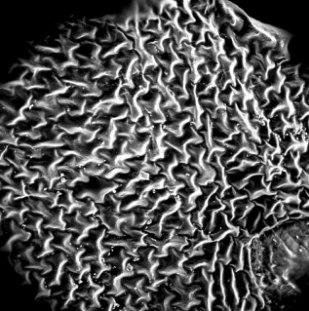
The RMIT team said the new design drew on nature’s own solution to the challenge of filling a space in the most efficient way possible through intricate self-repeating patterns known as fractals. The leaves of the western swordfern are densely crammed with veins, making them extremely efficient for storing energy and transporting water around the plant, said a leading member of the team. Our electrode is based on these fractal shapes which are self-replicating, like the mini structures within snowflakes and we’ve used this naturally-efficient design to improve solar energy storage at a nano level.
Graphene enables solar-powered "electronic skin" with sensing abilities
Researchers at the University of Glasgow have used graphene to develop a robotic hand with solar-powered skin, which may open the door to the development of prosthetic limbs or robots with a sense of touch.

The team created the skin with the help of a single atomic layer of graphene, in a method that includes integrating power-generating photovoltaic cells into the electronic skin. The scientists say that Whatever light is available, 98 percent is going and hitting the solar cell, explaining that a solar panel is located just under the surface of the clear graphene skin. it is generating power that can be used to get the sensitivity, the tactile feeling.
Graphene used in a molecule that converts carbon dioxide to carbon monoxide
An international team of scientists has designed a molecule that uses light or electricity to convert the greenhouse gas carbon dioxide into carbon monoxide. The process includes using a nanographene-rhenium complex connected via an organic compound known as bipyridine to trigger a highly efficient reaction that could someday replace solar cells.
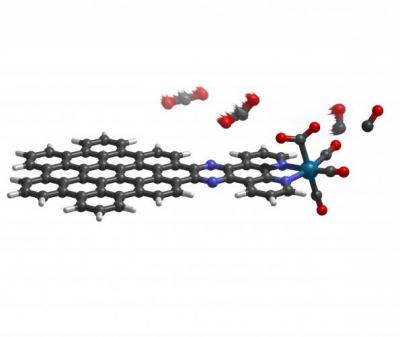
The molecule acts as a two-part system: a nanographene "energy collector" that absorbs energy from sunlight and an atomic rhenium "engine" that produces carbon monoxide. The energy collector drives a flow of electrons to the rhenium atom, which repeatedly binds and converts the normally stable carbon dioxide to carbon monoxide. The idea to link nanographene to the metal arose from earlier efforts to create a more efficient solar cell with the carbon-based material. But this model actually eliminates the solar cells, and uses the light-absorbing quality of nanographene alone to drive the reaction.
Graphene-perovskite large area solar cell achieves record efficiency
Researchers at the Centre for Hybrid and Organic Solar Energy (CHOSE) of the University of Rome Tor Vergata, along with researchers at the Italian Institute of Technology (IIT) and the University of Applied Sciences in Crete (TEI), have stated that they set a new record for conversion efficiency of a perovskite photovoltaic module with an area larger than 50 cm2.
The success was achieved as part of Graphene Flagship, the 1 billion euro European project that promotes graphene-based innovation in sectors like energy, electronics, technology and medicine. Perovskites photovoltaic modules' efficiency is usually demonstrated in the laboratory on cells less than 1 cm2 in size, whereas the new test was performed on modules with an area larger than 50 cm2. The electronic and chemical properties offered by graphene have made it possible to overcome the many difficulties related to the realization of large-area perovskite solar panels.
CSIRO produces graphene from soybeans
The Commonwealth Scientific and Industrial Research Office (CSIRO) has developed a novel method that uses soybean oil and other waste oils to produce graphene. Called ‘GraphAir’, the method is said to make graphene production faster and simpler.
The GraphAir technology is considered simple as it eliminates the need for a highly controlled environment and grows graphene in ambient air. This ambient-air process for graphene fabrication is fast, simple, safe, potentially scalable, and integration-friendly, CSIRO researchers said. Our unique technology is expected to greatly reduce the cost of graphene production and drastically improve the uptake of graphene in new applications.
Graphene and porphyrins join to create an exciting new material
Researchers at the Technical University of Munich have found that graphene can be combined with porphyrins, the molecules that convey oxygen in haemoglobin and absorb light during photosynthesis, to get a material with exciting new properties. The resulting hybrid structures could be used in the field of molecular electronics, solar cells and in developing new sensors.
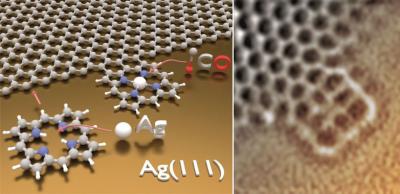
The technique involves growing a graphene layer on a surface of silver to use its catalytic properties. Then, under ultra-high vacuum conditions, porphyrin molecules are added. These lose the hydrogen atoms from their periphery when heated on the metal surface, and they end up connecting to the graphene edges.
Nanjing team develops graphene oxide-based solar desalination system
Researchers from the Chinese Nanjing University have reportedly developed a graphene oxide-based solar desalination system that does not require a solar concentrator or thermal insulation. Featuring a confined 2D water channel, the system is able to achieve high levels of solar absorption and effective desalination.
The research team stated that it used a graphene oxide film as the basis for a device. The graphene oxide film is said to be foldable and produced using a scalable process. With this at the core of the system, the researchers believe that the development represents "a concrete step for solar desalination to emerge as a complementary portable and personalized clean water solution".
Graphene-perovskite solar cells exceed 18% efficiency
A team of researchers from Italy has created hybrid perovskite-graphene solar cells that show good stability upon exposure to sunlight, while still maintaining an impressive efficiency of over 18% - the highest reported efficiency of graphene perovskite hybrid solar cells to date.
Despite tremendous progress in Perovskite PV performance, the stability of these devices is still questionable. In particular, air and humidity degrade cell performance, as do continued exposure to sunlight and heat, setting back the advantages over other types of solar cells. Graphene and graphene-related materials (GRMs) have properties that make them shine in applications like protective layers, and so arise as natural candidates to protect PSCs from atmospheric degradation.
Pagination
- Previous page
- Page 6
- Next page
